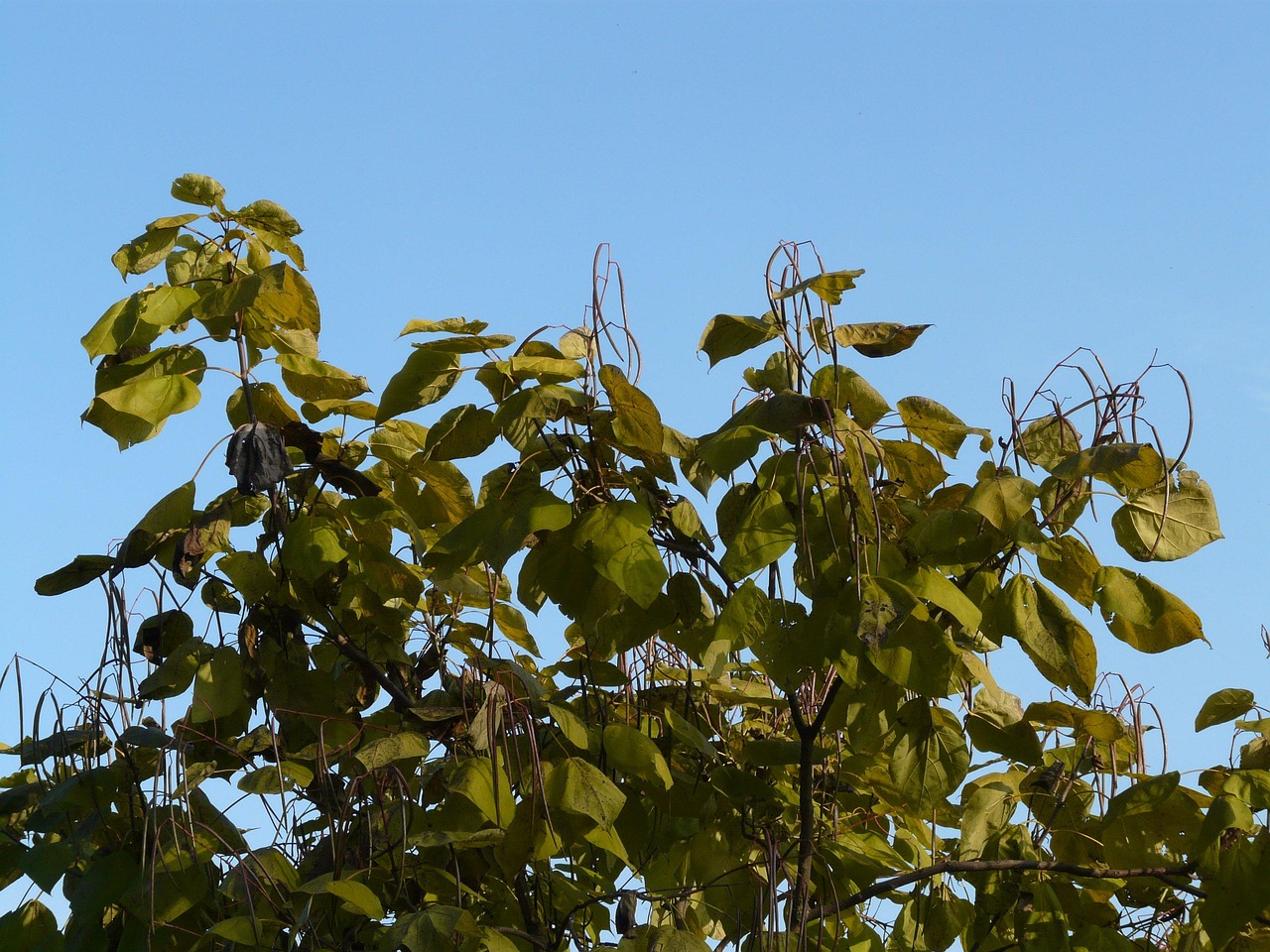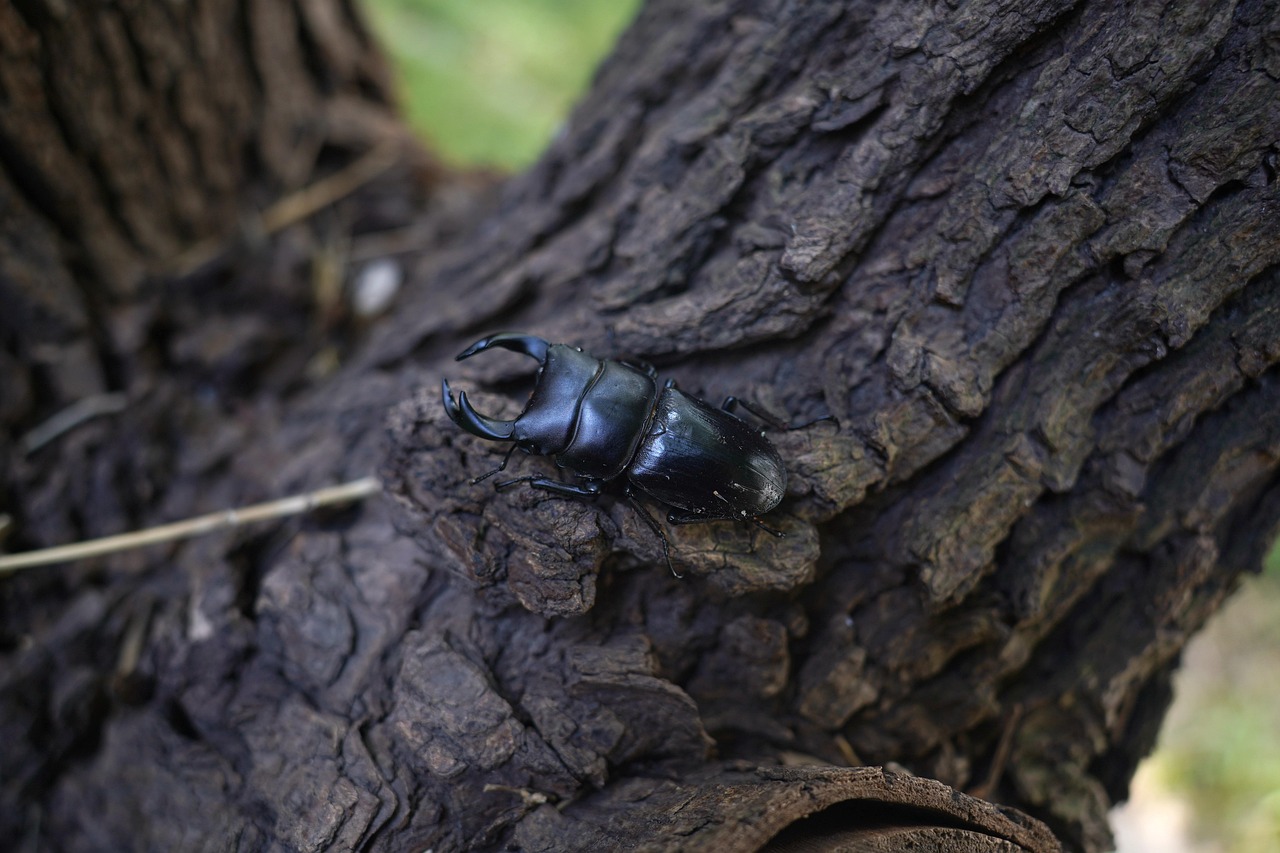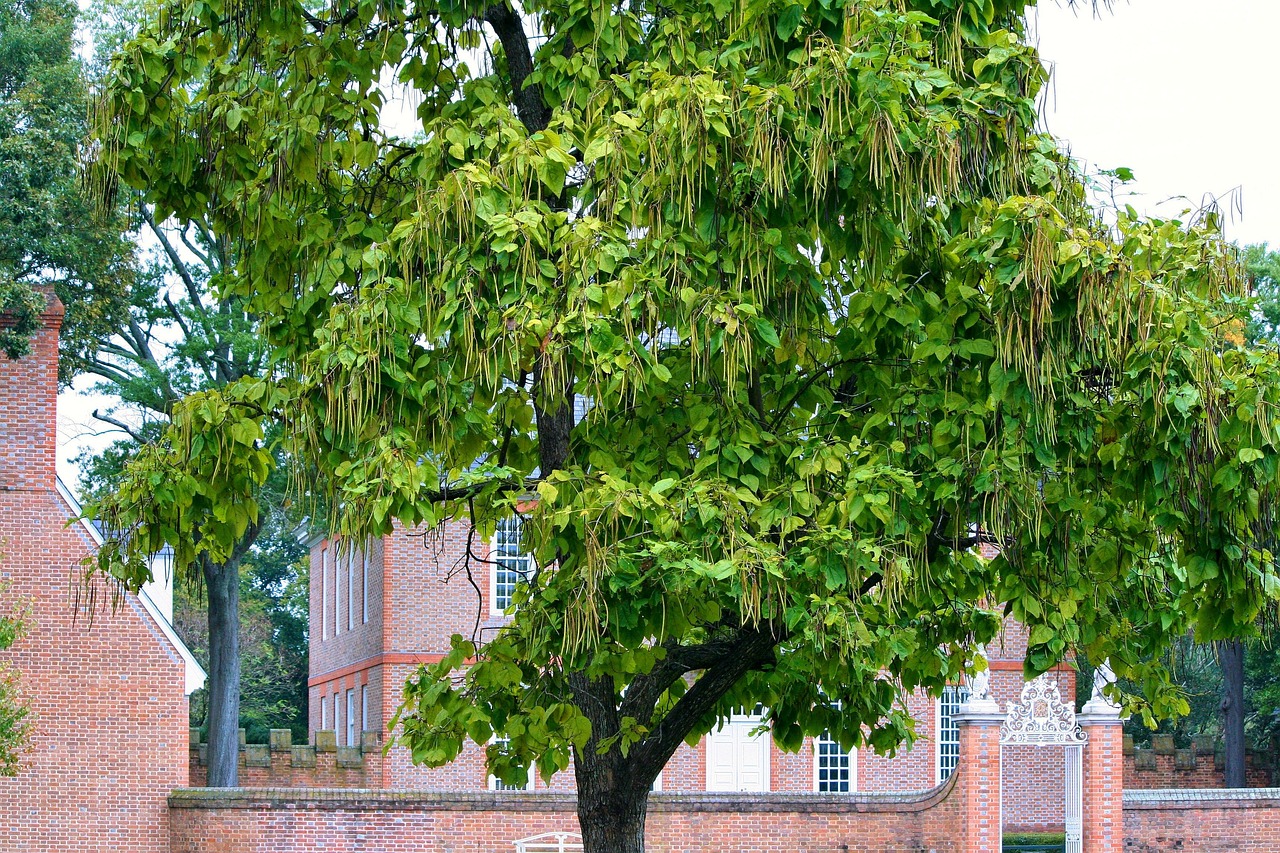The Northern Catalpa tree, known for its robust growth, can reach heights of 40 to 60 feet. It grows rapidly, often adding 3 to 5 feet per year. Its broad canopy provides significant shade, making it a popular choice for parks and residential areas.
The Northern Catalpa (Catalpa speciosa) is a deciduous tree native to the United States. It is appreciated for its beautiful flowers, large leaves, and impressive growth rate. This tree is often found in the central and eastern parts of the country. Its unique characteristics make it a favored option for landscaping and shade provision in various environments.

One of the most notable attributes of the Northern Catalpa is its rapid growth rate. Under ideal conditions, the Northern Catalpa can grow between 3 to 5 feet annually. This makes it an excellent choice for those looking to establish shade quickly. The tree typically reaches maturity within 10 to 20 years, depending on soil quality, water availability, and climate.
Growth Rate of the Northern Catalpa
The growth rate of the Northern Catalpa can vary based on several factors. These include soil type, sunlight exposure, and moisture levels. Here are some key points regarding its growth:
- The Northern Catalpa prefers well-drained soil but can tolerate various soil types.
- It thrives in full sunlight but can also grow in partial shade.
- Consistent watering during dry periods can encourage faster growth.
In optimal conditions, the tree can grow taller than 60 feet, with a canopy spread of up to 30 feet. This expansive canopy provides ample shade, which is crucial for urban areas where heat can be a concern. The shade produced by the tree can lower temperatures significantly around it, creating a more comfortable environment for people and other plants.

To illustrate the growth characteristics of the Northern Catalpa, the following table summarizes essential growth metrics:
| Age (Years) | Height (Feet) | Growth Rate (Feet/Year) |
|---|---|---|
| 1 | 5-10 | 3-5 |
| 5 | 20-30 | 3-5 |
| 10 | 40-50 | 3-5 |
| 20 | 50-60+ | 3-5 |
The Northern Catalpa is not only favored for its growth but also for its aesthetic appeal. The tree produces large, heart-shaped leaves that can measure up to 12 inches long. In June, it blooms with striking white flowers that are trumpet-shaped and attract pollinators such as bees and butterflies. Following the flowering season, long seed pods develop, adding further interest to this dynamic tree.
An important aspect of the Northern Catalpa’s growth is its ability to provide shade effectively. The wide canopy offers natural cooling in summer months. This benefit is especially valuable in urban settings where heat can be amplified by asphalt and concrete surfaces. By planting Northern Catalpa trees strategically, homeowners and city planners can create shaded areas that enhance outdoor living spaces.

Furthermore, the shade provided by the Northern Catalpa can benefit other plants in the area. It can help reduce soil moisture loss during hot weather and protect undergrowth from harsh sunlight. This ability to create a microclimate allows a variety of plants to thrive beneath its canopy, promoting biodiversity in landscapes.
In summary, the Northern Catalpa tree stands out due to its rapid growth rate and expansive shade benefits. Its unique characteristics make it a valuable addition to both residential and public landscapes. With proper care and maintenance, this tree can flourish and provide lasting benefits for many years.
Environmental Benefits of the Northern Catalpa
The Northern Catalpa tree not only serves as an aesthetic addition to landscapes but also offers numerous environmental benefits. Its large canopy and rapid growth contribute positively to the ecosystem. Here are several ways the Northern Catalpa enhances its surroundings:

- Air Quality Improvement: The tree absorbs carbon dioxide and releases oxygen, improving air quality.
- Habitat Creation: The thick foliage provides shelter for birds and other wildlife.
- Soil Erosion Prevention: Its extensive root system stabilizes the soil, preventing erosion.
These environmental advantages make the Northern Catalpa an excellent choice for urban reforestation and landscape restoration projects. Its ability to thrive in various conditions allows it to be planted in diverse environments, from parks to residential areas.
Wildlife Attraction
The Northern Catalpa is particularly attractive to various forms of wildlife. The tree’s flowers bloom in summer, producing nectar that draws in pollinators. Here are some of the key wildlife interactions associated with the Northern Catalpa:
- Pollinators: Bees, butterflies, and hummingbirds are often seen visiting the tree during its flowering season.
- Birds: The tree becomes a nesting site for various bird species due to its dense foliage.
- Insects: Several species of insects utilize the tree, contributing to the local food chain.
This interaction with wildlife not only enriches local biodiversity but also provides opportunities for educational experiences in natural settings. Observing the relationships between flora and fauna can be an engaging activity for families and nature enthusiasts alike.
Landscaping Uses of the Northern Catalpa
The Northern Catalpa is highly valued in landscaping for its size, shape, and versatility. Its broad canopy makes it suitable for a variety of landscaping applications. Here are some common uses:
- Shade Trees: Ideal for parks, playgrounds, and backyards where shade is needed.
- Specimen Trees: Its unique appearance makes it an attractive focal point in gardens.
- Street Trees: Often planted along streets to provide shade and visual appeal.
The Northern Catalpa can also serve as a windbreak, helping to reduce wind speed and protect nearby structures. Its robust nature allows it to withstand various weather conditions, making it a reliable addition to any landscape.
Maintenance Considerations
While the Northern Catalpa is relatively low-maintenance, certain care practices can help ensure its health and longevity. Here are some essential maintenance tips:
- Watering: Regular watering is crucial during dry spells, especially for young trees.
- Pruning: Pruning in late winter or early spring encourages healthy growth and removes dead branches.
- Pest Management: Monitor for pests such as caterpillars or aphids that may affect leaf health.
Implementing these maintenance practices can enhance the tree’s growth rate and overall health, allowing it to thrive in its environment.
Pests and Diseases
Like many trees, the Northern Catalpa can be susceptible to certain pests and diseases. Recognizing these issues early can help mitigate damage. Common pests include:
- Caterpillars: These can defoliate the tree if left unchecked.
- Aphids: Known to suck sap from leaves, leading to reduced vigor.
- Scale Insects: These pests can create a sticky residue on leaves.
Diseases affecting the Northern Catalpa may include root rot or leaf spot. Ensuring proper drainage and avoiding overwatering can help prevent these issues. Regular inspections of the tree will allow for prompt action if problems arise.
By understanding the environmental benefits, landscaping uses, maintenance needs, and potential challenges associated with the Northern Catalpa, homeowners and landscape designers can make informed decisions about integrating this remarkable tree into their spaces.
Cultural Significance of the Northern Catalpa
The Northern Catalpa tree holds cultural significance in various regions, particularly in the United States. Its unique features and rapid growth have made it a symbol of strength and resilience. This tree is often associated with historical landscapes and has been used in various cultural practices.
Historical Uses
Throughout history, the Northern Catalpa has been utilized for several practical purposes. Its durable wood is highly valued for its resistance to decay, making it suitable for various applications:
- Furniture: The wood is often used to create furniture due to its attractive grain and durability.
- Construction: Historically, it has been used in the construction of fences, posts, and even boats.
- Musical Instruments: The wood is sometimes used in crafting musical instruments, particularly as a tonewood.
These historical uses demonstrate the tree’s multifaceted value beyond mere aesthetics. Its timber has served practical needs while contributing to local economies.
Symbolism and Folklore
The Northern Catalpa is often featured in folklore and local traditions. In various cultures, trees symbolize life, growth, and connection to nature. The Northern Catalpa’s rapid growth and impressive stature have led to associations with prosperity and protection:
- Protection: Many communities plant Catalpa trees near homes as a protective measure against storms.
- Growth: Its swift growth symbolizes new beginnings and prosperity for families.
- Beauty: The tree’s beautiful flowers have made it a subject of admiration in poetry and art.
This cultural reverence further underscores the importance of the Northern Catalpa in enhancing community landscapes and individual gardens.
Applications in Urban Planning
Urban planners increasingly recognize the benefits of incorporating the Northern Catalpa into city landscapes. Its rapid growth and ability to provide shade make it an ideal candidate for urban environments. Here are several applications of the tree in urban planning:
- Parks and Recreation Areas: The tree’s broad canopy offers shade for outdoor activities, enhancing the usability of parks.
- Street Tree Planting: Strategically planting Catalpas along streets can improve air quality and reduce urban heat.
- Community Gardens: The Northern Catalpa can help create microclimates that support other plants in community gardens.
By utilizing the Northern Catalpa, urban planners can contribute to more sustainable and pleasant living environments that enhance the quality of life for residents.
Considerations for Urban Planting
When planning for the inclusion of Northern Catalpa trees in urban spaces, certain factors should be taken into account to ensure their successful growth:
- Space Requirements: Ensure adequate space for the tree’s expansive roots and canopy to develop without obstruction.
- Soil Preparation: Test soil quality to ensure it meets the tree’s drainage and nutrient needs.
- Regular Maintenance: Schedule regular maintenance to prune and inspect trees for pests to keep them healthy in an urban setting.
These considerations help ensure that the Northern Catalpa can thrive in urban environments while delivering its many benefits.
Educational Opportunities
The Northern Catalpa tree also serves as an excellent educational tool for schools and community organizations. Its rapid growth and environmental benefits provide ample opportunities for learning:
- Environmental Education: Programs can teach children about ecosystems, biodiversity, and tree care.
- Cultural History Lessons: The tree’s historical significance can be incorporated into lessons about local heritage.
- Agricultural Practices: Workshops on sustainable gardening can include discussions about planting native species like the Northern Catalpa.
By integrating the Northern Catalpa into educational initiatives, communities can foster a deeper appreciation for nature and promote stewardship among future generations.
The multifaceted applications of the Northern Catalpa extend beyond its physical attributes. From cultural significance to urban planning and educational opportunities, this remarkable tree plays a vital role in enriching our environment and communities.
Economic Benefits of the Northern Catalpa
Beyond its aesthetic and environmental contributions, the Northern Catalpa tree also provides notable economic benefits. The tree’s fast growth and valuable wood make it an asset for both individual landowners and local economies. Here are some key economic aspects:
- Lumber Production: The durable wood of the Northern Catalpa is sought after for various applications, including furniture-making and construction. This demand can create job opportunities in local timber industries.
- Landscape Services: As the popularity of sustainable landscaping grows, the demand for Northern Catalpa trees in residential and commercial projects can lead to increased business for nurseries and landscape architects.
- Tourism: Parks and gardens featuring Northern Catalpa trees can attract visitors, contributing to local tourism and associated businesses.
The economic impact of incorporating the Northern Catalpa into landscapes highlights its value not just as a tree but as a contributor to sustainable development in communities.
Climate Resilience
As climate change continues to affect weather patterns, the ability of trees to adapt to changing conditions becomes increasingly important. The Northern Catalpa is known for its resilience in various climates, making it an excellent choice for future landscaping and urban forestry efforts. Some attributes include:
- Drought Tolerance: Once established, the Northern Catalpa can withstand periods of drought, making it suitable for areas with fluctuating rainfall.
- Heat Resistance: Its broad canopy helps mitigate urban heat islands by providing shade, thereby reducing energy consumption for cooling.
- Storm Resilience: The robust root system enables the tree to withstand strong winds and storms better than many other species.
These qualities position the Northern Catalpa as a valuable component of climate-resilient urban forestry strategies, highlighting its role in creating more sustainable cities.
Community Engagement and Involvement
Community involvement plays a vital role in the successful planting and maintenance of Northern Catalpa trees. Engaging residents in tree planting initiatives can foster a sense of ownership and responsibility towards local green spaces. Here are ways communities can get involved:
- Tree Planting Events: Organizing community events where residents can plant Northern Catalpa trees encourages participation and strengthens community bonds.
- Educational Workshops: Hosting workshops on the care and benefits of the Northern Catalpa can enhance community knowledge and engagement.
- Volunteer Maintenance Programs: Establishing programs where community members can help with the upkeep of public trees promotes stewardship and care for local environments.
By involving communities in such activities, the benefits of the Northern Catalpa extend beyond individual trees to enrich collective community life.
Final Thoughts
The Northern Catalpa tree is truly a remarkable species that offers a multitude of benefits. From its rapid growth rate and extensive shade provision to its cultural significance and economic advantages, this tree plays a vital role in enhancing our environments. Its ability to thrive in various conditions makes it a versatile choice for urban planners and homeowners alike.
The educational opportunities presented by the Northern Catalpa further emphasize its importance in fostering a deeper appreciation for nature in our communities. As we face challenges such as climate change and urbanization, incorporating resilient species like the Northern Catalpa into our landscapes can promote sustainability and biodiversity.
In conclusion, whether planted in residential gardens, parks, or along streets, the Northern Catalpa stands out as a tree that not only beautifies our surroundings but also supports ecological health, economic growth, and community engagement. Recognizing its value ensures that future generations will continue to benefit from its many attributes.
